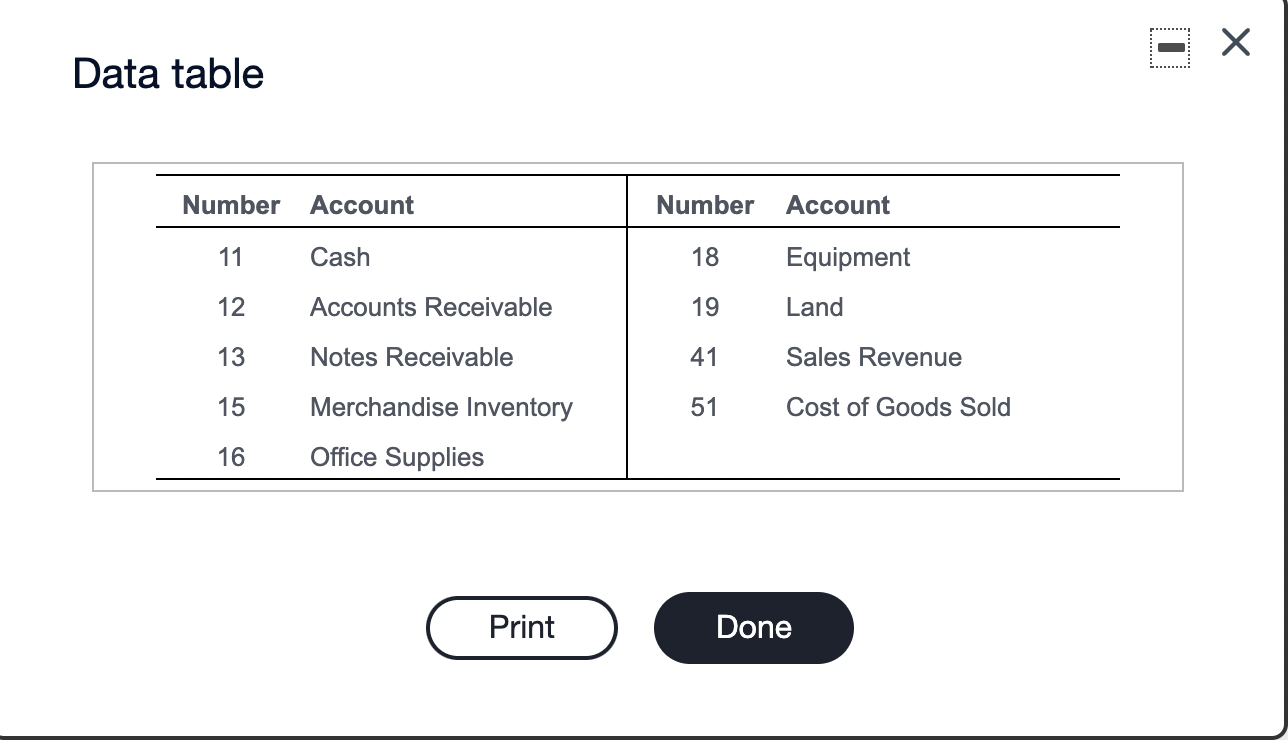Question
Jul. 2 Sold merchandise inventory on credit, terms n/30, to Intelysis, Inc., $1,900 (cost, $400). Jul. 3 Sold office supplies to an employee at cost,
 Jul. 2
Jul. 2
Sold merchandise inventory on credit, terms n/30, to Intelysis, Inc., $1,900 (cost, $400).
Jul. 3
Sold office supplies to an employee at cost, $75, receiving cash.
Jul. 7
Cash sales for the week totaled $2,000 (cost, $1,600).
Jul. 9
Sold merchandise inventory on account, terms n/30, to A. C. Malloy, $7,400 (cost, $5,100).
Jul. 10
Sold land that cost $9,000 for cash of the same amount.
Jul. 11
Sold merchandise inventory on account, terms n/30, to Spark Electric, $5,700 (cost, $3,400).
Jul. 12
Received cash from Intelysis in full settlement of its account receivable from July 2.
Jul. 14
Cash sales for the week were $2,500 (cost, $1,500).
Jul. 15
Sold merchandise inventory on credit, terms n/30, to the partnership of Will & Bill, $3,700 (cost, $2,500).
Jul. 20
Sold merchandise inventory on account, terms n/30, to Spark Electric, $600 (cost, $220).
Jul. 21
Cash sales for the week were $990 (cost, $650).
Jul. 22
Received $4,700 cash from A. C. Malloy in partial settlement of his account receivable.
Jul. 25
Received cash from Will & Bill for its account receivable from July 15.
Jul. 25
Sold merchandise inventory on account, terms n/30, to Ogarth, Co., $1,540 (cost, $970).
Jul. 27
Collected $5,200 on a note receivable. There was no interest earned.
Jul. 28
Cash sales for the week totaled $3,720 (cost, $2,470).
Jul. 29
Sold merchandise inventory on account, terms n/30, to R. A. Banks, $210 (cost, $110).
Jul. 31
Received $2,000 cash on account from A. C. Malloy.
Requirement 1, 2, and 3. Use the appropriate journal to record the preceding transactions in a sales journal (omit the Invoice No. column) and a cash receipts journal (omit the Sales Discounts Forfeited column). Total each column of the sales journal and the cash receipts journal. Show that total debits equal total credits. Show how postings would be made by entering the account numbers and check marks in the appropriate places in the journals.
Begin with the sales journal. Enter the transactions and total the journal. (Assume all postings are made to the applicable ledgers. If a box is not used in the journal leave the box empty; do not select information and do not enter a zero.)
| Sales Journal | Page 1 | ||||||
| Invoice | Customer | Post. | Accounts Receivable DR | Cost of Goods Sold DR | |||
| Date | No. | Account Debited | Ref. | Sales Revenue CR | Merchandise Inventory CR | ||
| Jul. | |||||||
| Jul. | 31 | Totals | |||||
Show how total debits equal total credits.
| Total debits | = | Total credits | |
| Sales journal | = |
Record the appropriate transactions in the cash receipts journal. (If a box is not used in the journal leave the box empty; do not select information and do not enter a zero. Select "X" if the column total is not posted. Abbreviations used: Rec. = Receivables, Rev. = Revenue, Accts = Accounts, Inv. = Inventory)
| Cash Receipts Journal | Page 1 | ||||||||
| Post. | Accounts | Sales | Other | Cost of Goods Sold DR | |||||
| Date | Account Credited | Ref. | Cash DR | Rec. CR | Rev. CR | Accts CR | Merchandise Inv. CR | ||
| Jul. | |||||||||
| Jul. | 31 | Totals | |||||||
Show how total debits equal total credits.
| Total debits | = | Total credits | |
| Cash receipts journal | = |
Step by Step Solution
There are 3 Steps involved in it
Step: 1

Get Instant Access to Expert-Tailored Solutions
See step-by-step solutions with expert insights and AI powered tools for academic success
Step: 2

Step: 3

Ace Your Homework with AI
Get the answers you need in no time with our AI-driven, step-by-step assistance
Get Started


